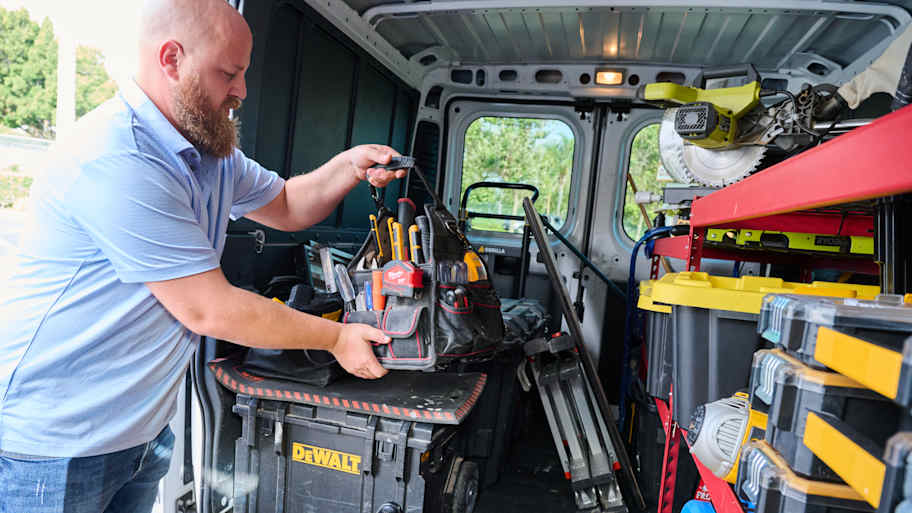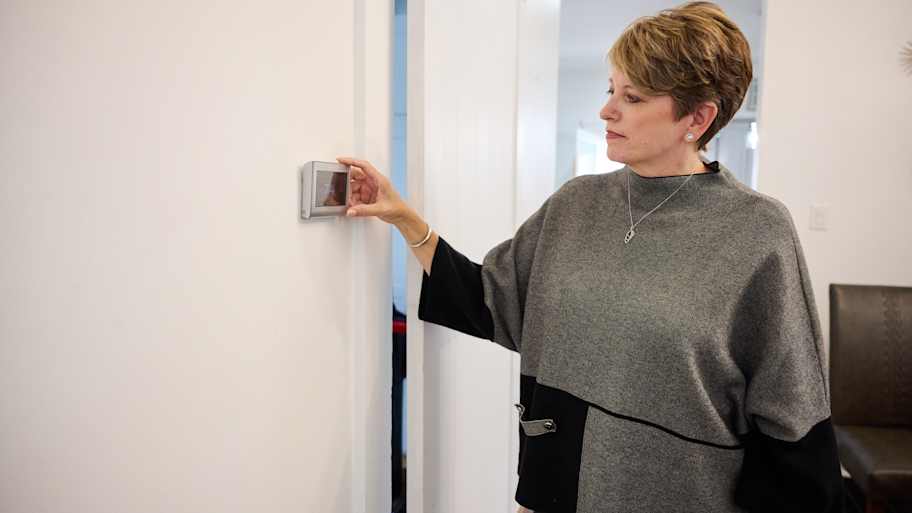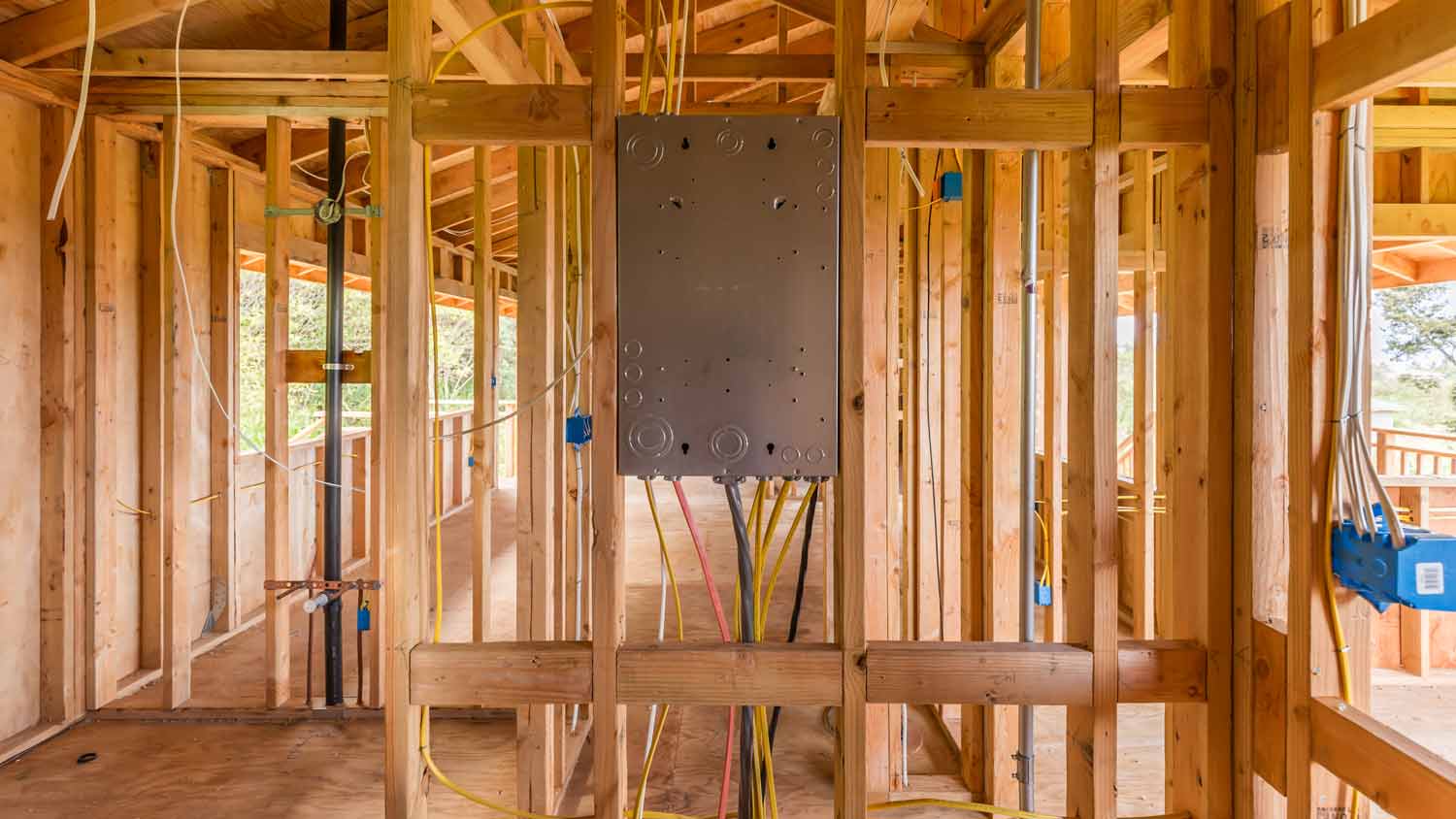How to Ground a Wire in Your Home for Better Surge Protection
Upgrade your outlet(s) and protect your home and appliances from surges


Grounding a wire means that your electrical wire runs from an outlet into the earth, protecting your home from a surge of electric energy. In a new home, grounded wires are mandatory—but in older homes, you may not have this type of protection. That prompts some savvy homeowners to tackle the project themselves or hire a professional electrician to upgrade their setup.
In this guide, learn how to ground a wire by installing new electrical outlets.
Note: this guide will walk you through how to ground a wire by replacing your old outlet with a new one.
What is a Ground Wire?
To protect against shock and surges, a ground wire runs beneath your home and offers a path for electricity to flow into the earth instead of in your home. Without a ground wire, unsafe levels of electricity could harm you or your loved ones in the event of a short circuit.
Most modern homes have grounded outlets, but switches in older homes (built before 1970) are most likely not grounded.
How to Prep for Grounding a Wire
1. Make Sure This is a Job For You
It's highly advisable that you hire a local electrician or other professional to help you ground a wire. Don't chance it if you're unsure about the work. Better to be safe than sorry.
Some states or counties' local building codes may require grounding older wires. Do research to make sure this isn't the case for your area.
2. Receive Approval First
DIY electrical work often requires approval or permits from a local ordinance office or building department beforehand, even for minor work. Failure to obtain this could result in fines or other consequences.
You might also miss out on specific guidelines, such as how or where to install new electrical outlets. Failure to follow these guidelines could also result in fines or penalties.
For this project, you’ll need the following supplies:
Circuit tester
Screwdriver or power drill with screw bits
Clamps
Three-prong grounded electrical outlet
Three Ways to Ground a Wire
There are a few different methods you can use to ground a wire. No matter which option you go with, always follow safety practices when doing electrical work.
How to Ground a Wire to a New Electrical Outlet
Cut Power

Shut off your circuit breaker, or at least the circuit that runs to the outlet you're planning to replace. Use a circuit tester to ensure there is no electricity running through the unit before moving on
Install Your New Electrical Outlet
Grab a new three-prong GFCI electrical outlet (as low as $4 at home improvement stores). You won't have the full protection of a grounded wire running into the outside of your home with this strategy, but you'll at least have ground poles inside your outlet that help better protect your home and appliances from electrical surges.
Carefully read the manufacturer's instructions on setting up your new electrical outlet.
With your power off, use a screwdriver or power drill to remove the old outlet. Unwire the hot (black) wire and take out any additional screws inside. Remove the box, then install the new one the opposite way. Reconnect the wires per instructions.
Turn Your Power Back On and Test
With your device installed on the wall, turn your circuit breaker back on. Your circuit tester should indicate if electricity is flowing through to the area. If not, shut the breaker off and repeat the steps to troubleshoot. Make sure all the wires are correctly and tightly bound together.
How to Ground a Wire with a Grounding Clip
Grounding wires is specific to the type of home you live in and what needs to be grounded.
If your outlet box is metal instead of plastic, you can use a self-grounding metal clip (or grounding screw) to attach the grounding wire to the rim of the box. If the grounding clip has a paper washer on it, remove it before placing the outlet into the outlet box. This metal-to-metal contact provides the grounding path. Once the outlet is screwed into the metal box, the box and outlet are grounded for safety.
How to Run a Ground Wire from Your Circuit Breaker
Again, we believe in safe DIYs. If performing advanced electrical work feels a little scary, call your local electrician for help with this grounding method.
Install a grounding rod on the breaker
Connect the ground wire and the neutral (white) pigtail wire to the grounding bar
Run the grounding wire to your new outlet
Tips for Dealing With Electrical Wires
It’s important to understand what the colors on electrical wires mean. Every wire will have an insulated casing indicating its purpose. You must also use the right type of wire for your project—match the gauge to your electrical needs.
Finally, invest in a circuit tester, which will help ensure your new outlet functions properly. You can buy a tester for about $20 at your local home improvement store.
DIY vs. Hire a Pro
Most electrical projects are affordable—a DIY job only requires a few tools, wiring, and an outlet, which you can buy for $7 to $25. Ground wiring runs from $6 to $8 per foot.
If you choose to pay to hire a professional electrician, budget between $50 and $100 per hour. You can expect to pay between $130 to $170 per connection, though your final price will vary on the number of outlets you want to ground.
Frequently Asked Questions
Updating your old outlets, or adding grounding clamps to a metal box are two methods. Each home is different. Consult an electrician for advice on grounding a wire without doing extensive work to dig into the ground.
It prevents electrical surges, protects your home from things like electrical fires, and prevents you from getting shocked if an errant surge runs through your power line. Without grounded wires, your appliances could also get damaged during lightning storms.
Yes, in a new home, ground wires are mandatory. Some older homes may not be grounded, but if you decide to renovate, you will need to have your electricity grounded at that time. Remember, grounding helps keep everyone in your home safe from sudden electrical surges. It’s best to hire an electrician to inspect and work with your home’s wiring.



.jpg?impolicy=leadImage)

- Home Generator Repair
- Lamp Repair
- Electric Repair
- Generator Installation
- TV Antenna Services
- Emergency Electricians
- Commercial Electricians
- Attic Fan Installation
- Attic Fan Repair
- Exhaust Fan Installation
- Electric Inspectors
- Subcontractors
- Electrical Construction
- EV Charger Installer
- Chandelier Installation
- Doorbell Installation
- Bathroom Fan Installation
- Ring Installers
- Electrical Panel Upgrade










